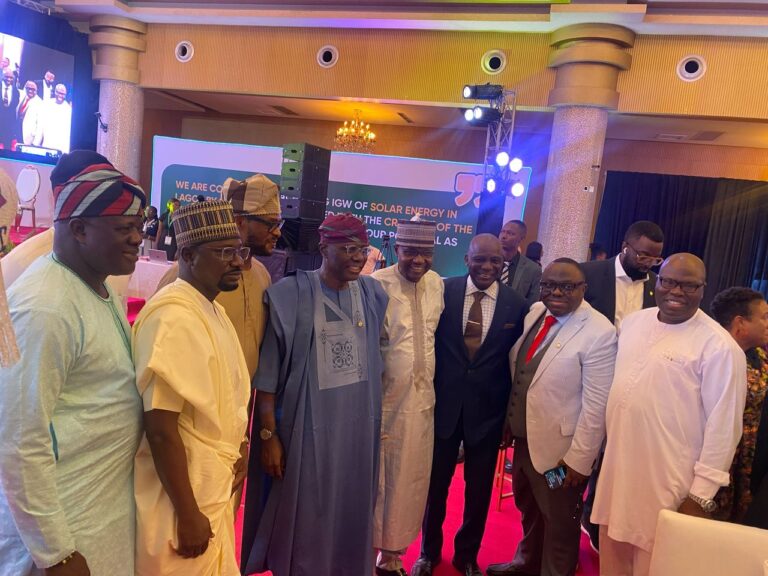Keynote Speech by
Professor Bart Nnaji, CON, NNOM, FAS, FAEng
Chairman and CEO
Geometric Power Group at The 2025 Lagos State Energy Summit.
1. Greetings and recognitions.
2. My participation in this Energy Summit organized by the Lagos State Government is a homecoming for me. As the Special Presidential Adviser on Power and Chairman of the Presidential Task Force on Power (PTFP), I led the team that developed the Road Map for the Power Sector Reforms, and it was launched here in Lagos on August 26, 2010, at Eko Hotel by President Goodluck Jonathan. And as the Minister of Power in 2012, I had the honour to commission the 10MW gas-fired plant built by the Lagos State Government under Governor Babatunde Fashola’s leadership to provide electricity to its key establishments on Lagos Island and other places.
3. There is a most important step the Lagos State took two decades ago to provide power, which most Nigerians seem to have forgotten: It took the radical step to bring Enron, then the biggest electricity trader in the United States, to participate in power generation in Nigeria. On August 1, 1999, less than four months after the inauguration of democratic government in Nigeria, Governor Bola Tinubu, as he was then, caused Yinka Folawiyo Power and Enron of the United States to sign an agreement to supply 230MW from badges mounted near the Egbim Power Plant in Ikorodu, with the Federal Government as the guarantor. The Federal Government, through NEPA was, by law, in absolute control of power generation, transmission, and distribution.
4. The Lagos State bold move reminds me of my own experience around the same time. My team and I at Geometric Power signed an agreement with the Federal Government in 2000 to build an Emergency Power Plant in Abuja, which was embedded in a ring-fenced electricity distribution network in the Central Area of Abuja. That project supplied reliable electricity to the whole area, including the Presidential Villa, the NNPC headquarters, the Central Bank of Nigeria headquarters, the Federal Secretariat, and so on. It gave us the approach the Federal Government to sign a Memorandum of Understanding (MoU) in 2004 for the Aba Ring-Fenced Area comprising of (delete) 9 of the 17 LGAs of Abia State. This MoU led to a substantive Agreement with the Federal Government in 2005 to build a power plant to be embedded in the Ring-fenced DisCo in Aba, Abia State, before the 2005 Electric Power Sector Reform Act, which ended the Federal Government’s monopoly in the sector, came into force. The rest is history.
5. Still, despite its history of participating in the development of the power sector, the Lagos State Government studied the situation carefully before deciding to leverage the 2023 Power Sector Act, which, among other things, permits states to operate their own electricity markets through the creation of their own electricity regulatory commissions. I assume that the Lagos State Government did study the experiences of Rivers and Akwa Ibom states that set up their own power generation companies (GenCos) before deciding last year to call for bids to build 4,000MW gas power plants in Lagos to make up for the 6,000MW shortfall from the national grid.
6. I am glad to hear that the existing electricity distribution companies (DisCos) operating in Lagos, namely, Ikeja Electric and Eko Electricity Distribution Plc, are establishing subsidiaries to manage the state’s electricity supply and distribution. This is a positive development that ensures efficiency. This should bring electricity distribution in Lagos closer to the Aba DisCo model, particularly if Lagos State enables the building of embedded power plants to serve the subsidiaries.
Many State Governments establishing their own regulatory commissions are thinking of building power plants and establishing DisCos. In effect, they are reversing the privatization of the power sector. They should note that the Federal Government failed to run such a model. Therefore, how could poor state governments succeed with such a model? Even with State regulatory commissions, states must contend with the issue of cost-reflective tariffs, or they provide subsidies. Power enterprises must be run purely as commercial enterprises. In other words, there should be no room for a subsidy, otherwise, Lagos State will drive its DisCos into financial difficulties that can lead the DisCos and their subsidiaries to experience the same conditions that some other DisCos have experienced, that is, taken over by their financiers. The subsidy cost is humongous. The Federal Government spends over N200 billion monthly on electricity subsidies despite significant tariff reviews in recent times. No state in the country can sustain electricity subsidies.
7. The Lagos State electricity plans are commendable. They will help provide millions of Nigerians without electricity with power. About 80 million Nigerians have no access. This is unacceptable in the 21st century. Algeria has long provided all its citizens with access. I, therefore, commend the organizers of this summit for making the theme of the keynote speech “The Journey to Energy for All”, though I have intentionally strayed from the theme to a considerable extent.
8. Finally, for the 4,000MW plants it is establishing to work, the Lagos State government has to join hands with other stakeholders to ensure that the Federal Government takes far-reaching steps to resolve the acute natural gas shortage in the country. There is limited gas for power plants and domestic manufacturing, and even for export, which is impacting the Nigeria Liquefied Natural Gas company. Nigeria is blessed with proven gas reserves of 210.5 trillion cubic feet of gas, thus making the country essentially a gas province with sprinkles of crude oil. Yet, there is no adequate gas for either the domestic market or the foreign markets. This is an awful paradox with grave consequences for everyone.
9. Ladies and gentlemen, I thank you for the honour of delivering the keynote address at this important summit. I wish you productive deliberations.
Thanks for listening.

